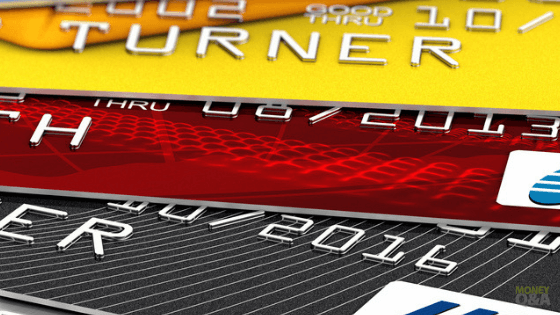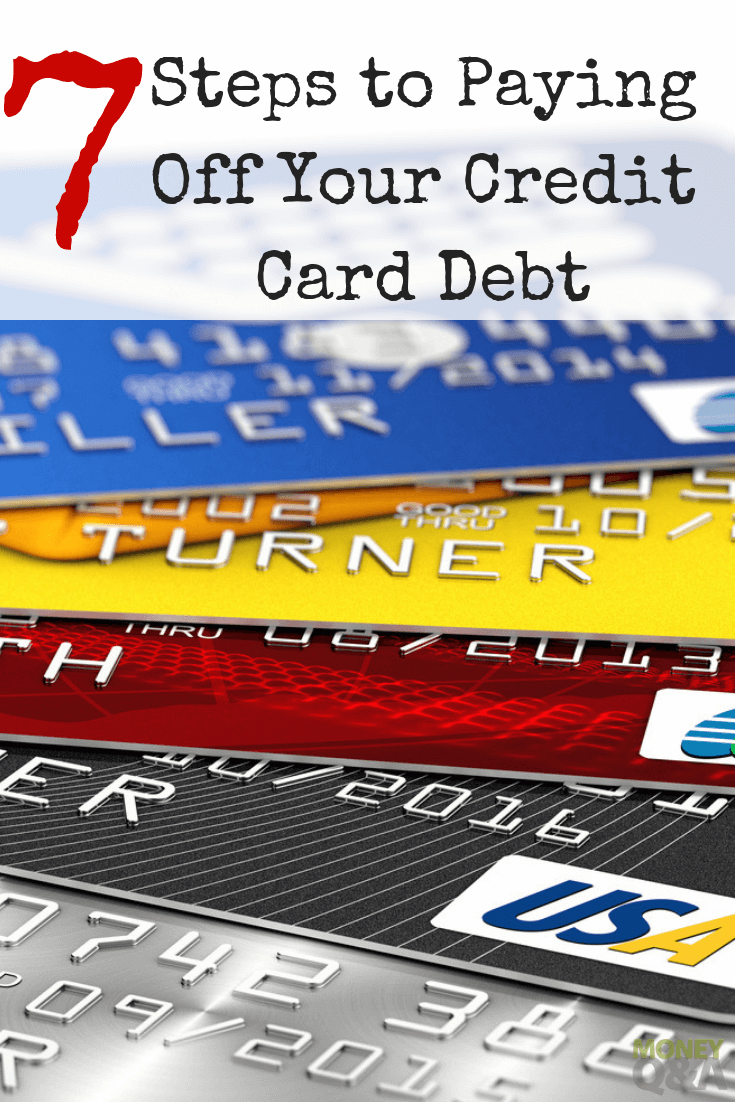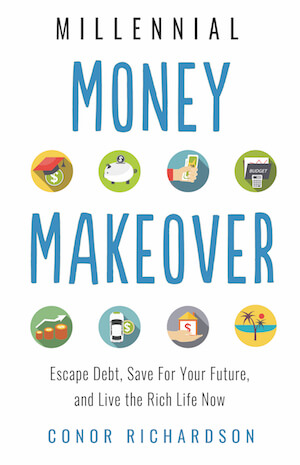The following is a guest post from Conor Richardson, CPA is the author of MILLENNIAL MONEY MAKEOVER: Escape Debt, Save for Your Future, and Live the Rich Life and founder of MillennialMoneyMakeover.com, where he helps Millennials master essential money matters. If you’d like to submit a guest post to Money Q&A, check out our guest posting guidelines.
Americans love credit card debt. The heady elixir of easy money is hard to resist. But as you enter into the New Year, carrying over a credit card balance from the previous year can sometimes make for a nasty financial hangover. With the average US credit card holder holding a balance of $5,839, it might take more work than you realize.
How to Pay Off Your Credit Card Debt
Start the New Year off right by eliminating your credit card debt. Begin the detoxification process by using the seven steps below to eliminate credit card debt insanely fast.
Step 1. Acknowledge Your Credit Card Debt
As with most interventions, the first step toward behavioral change is acknowledging that a problem exists. Your debt comes from a pattern of overspending or poor financial planning. It is vital to reflect on the main reasons why you opened your credit cards in the first place and to make sure that you are eliminating those variables from your life.
Next, construct a full inventory of your purchasing habits and analyze your consumption. After examining your spending, you can take refuge in the fact that this was past spending. Your past does not define today. You have made the critical decision to acknowledge the problem and slash your credit card debt.

Step 2. List Your Credit Card Debts in Ascending Order
Pull out all of your credit cards and lay them on a table. Sort them by balance, starting with the smallest balance first and working your way toward the largest balance. This process helps you visualize how many cards you are using and gives you a keen sense of what you are up against.
Once you have all of your credit cards laid out in the correct order, the credit card with the smallest balance on your list is what you are going to attack and eliminate first. Write down the balance and post it in a prominent place. Look at it repeatedly. That number is your first target.
Step 3. Create a Flash Budget
Now that you know what credit card to pay off first, you can start building what I like to call a flash budget. Begin by analyzing your monthly income and expenses and list out all sources of income. Once that is complete, create another list for your expenses, both fixed and variable. Subtract your expenses from income, and the difference is your margin to attack credit card debt.
Reworking your budget to meet your current debt repayment needs might take some adjusting. For now, you can focus on either increasing your earnings or cutting your costs. Once you have created your flash budget, it will be essential to develop a much more refined budget for long-term success.
Your budget will be an unbiased performance evaluator, holding you accountable for every purchase.
Step 4. Snowball Your Success
Debt repayment is more about behavioral change than pure economics. Researchers at Northwestern University’s Kellogg School of Management found that consumers who tackle small debt balances first are more likely to eliminate their overall debt. By paying off your smallest balances first, you create momentum, which leads to higher confidence to tackle the larger balances in your debt portfolio.
Conventional wisdom will tell you otherwise. This view advocates paying off your debts beginning with the highest interest rates first. But as you know, personal finance is about much more than numbers. Although this approach makes the most economic sense, paying off debt quickly doesn’t happen in a vacuum. Leverage academic literature to escape debt quickly.
Step 5. Pay With Cash
Once you begin the positive cycle of paying off your smaller credit card balances, you should focus next on how you are going to fund your day-to-day purchases. Because you fell prey to the frictionless form of credit card payment, you should use cash for daily transactions.
Cash gives you a palpable and visible pulse on how well you are sticking to your budget. Additionally, cash will force you to pause and contemplate the magnitude of each purchase. It may seem counterintuitive, but increasing the pain of the transaction is better for your financial health. This small change will stem your spending.
Step 6. Celebrate Your Wins
As with any significant accomplishment, it is important to acknowledge your small victories along the way. Each time you pay off a credit card balance, celebrate your success (using the cash from Step 5) and reward yourself.
Go to the movies, go out to dinner, or go to a concert. As you approach your final payment, the rewards will become less frequent because your balances increase. But realize the ultimate prize of becoming debt-free is just on the horizon.
Step 7. Share Your Success
As you develop new spending habits, it will become important to reflect on your experience. The process of sharing your success with family and friends allows you to prime yourself for successful practices and cultivate a sense of accomplishment.
In addition, reflecting and internalizing your daily financial wins improves your success rate. This routine helps you ensnare the credit card spending you are fighting to contain and may unknowingly help someone else along the way.
Conor Richardson, CPA is the author of MILLENNIAL MONEY MAKEOVER: Escape Debt, Save for Your Future, and Live the Rich Life and founder of MillennialMoneyMakeover.com, where he helps Millennials master essential money matters.



Great tips! I’m hoping to have ours paid off within the first few months of 2019. That’s the goal at least!
Awesome, Chonce! You can definitely do it! You got this.